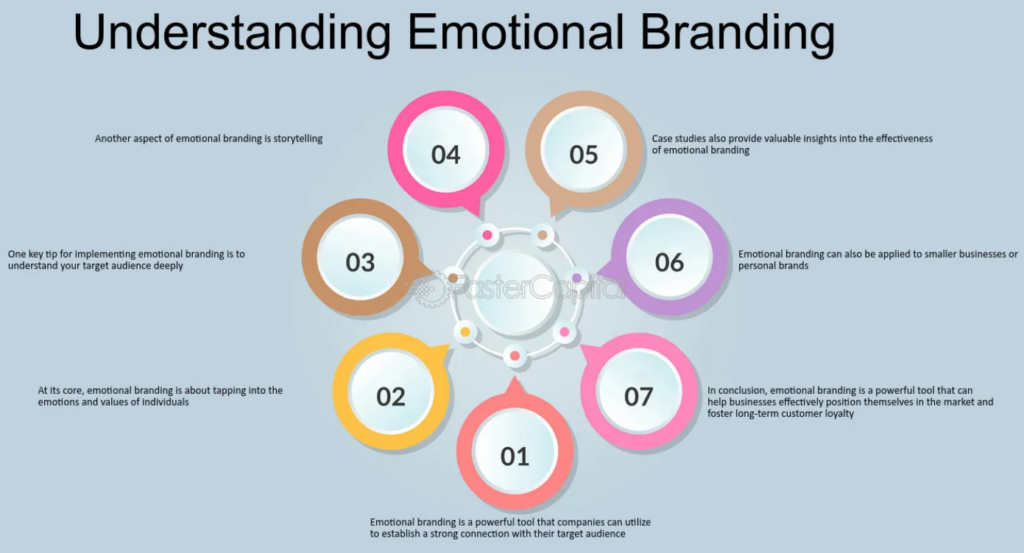To build successful branding, you need more than an eye-catchy slogan and a recognizable logo. Top brands use emotion to connect with people and build stronger relationships. So, how to apply emotional branding effectively? You need to understand the psychology behind the practice and how it applies to their target markets.
It’s Not Just Branding—It’s How You Make People Feel
Marc Gobe, in his book “The Concept of Emotional Branding” was first introduced more than 20 years ago. From years of working with big brands, Gobe explained how emotions help win over doubtful consumers.
Emotional branding can help brands and businesses of all sizes stand out from their competitors and get noticed in a very competitive marketplace .
To understand why emotional branding works so well, we need to look at how emotions affect us. Emotions help us decide what to focus on, how we act, and the choices we make. That’s why brands that use emotional messages often connect better with people than those that just share facts.

Breaking Down Emotional Branding
Some of the most successful emotional branding campaigns have four elements in common: storytelling, visual design, consistency and authenticity.
1. Storytelling
People have used stories for ages to connect with each other. Stories help brands feel more human and relatable than just sharing data. They give meaning to facts, making it easier for people to connect and remember.
2. Visual Design
Visual elements are critical to emotional branding, as the messages are related through stories. Images and design don’t just make a brand stand out—they also create emotional bonds with consumers.
3. Consistency
Another important element of digital marketing is consistency. Imagine seeing a warm, friendly ad on Instagram—then a serious, intense one on YouTube from the same brand. Mixed messages like that can make people question what the brand really stands for. If the emotions don’t feel genuine, they’ll likely move on.
4. Authenticity
Last but not least is authenticity. If a brand wants to tap into emotions, the message has to feel real. Nike shows that success comes from hard work, not shortcuts. If they said otherwise, it wouldn’t match who they are—and people would notice.

How Great Design Speaks to the Heart
Emotional branding isn’t just about stories—it’s also about design. When used wisely, elements like color psychology and impactful visuals can dramatically enhance how audiences connect with a brand.
Color And Font Psychology
1. Colors Speak Louder Than Words
Colors already tell a story without explanation. For example, blue often represents trust and dependability, while red stirs up energy, excitement, and strength. That’s why blue and gray are classic choices in the finance industry—they suggest stability and professionalism. Marketers who understand how colors impact perception, can use this insight to build stronger emotional ties with their audience.
2. The Hidden Power of Fonts
Typography subtly influences how people perceive a brand. Serif fonts feel classic and reliable, while sans-serif fonts look clean and modern—ideal for digital use. Custom fonts can add personality, helping a brand appear elegant, fun, or strong.
Visual Storytelling That Stays With You
The Role of Imagery in Emotional Branding
Coca-Cola’s Christmas ads bring cozy scenes and Santa to life, sparking nostalgia and warmth. Nike, on the other hand, shows intense workouts and determination, fueling motivation and strength. The right visuals don’t just show—they make people feel.
Designing With Intuition In Mind
Why Intuitive Design Matters
Great design feels natural. When people can use a product right away without confusion, it builds confidence and trust. Easy, intuitive experiences make users happy—and happy users stick around and spread the word.
Simple Ways To Apply Emotional Branding
You don’t need a massive budget to start connecting emotionally with your audience. Try these four practical approaches:
- Learn what moves your audience: Identify their frustrations, dreams, and emotional triggers.
- Tell a story: Create a brand narrative that resonates—stories connect better than raw data ever could.
- Use design with purpose: Choose visuals, fonts, and colors that align with your emotional message.
- Listen to emotional feedback: Go beyond star ratings—ask how your brand makes people feel.
Emotional branding goes beyond marketing—it builds relationships. With thoughtful design choices rooted in psychology, brands can foster deeper emotional connections and create lasting loyalty. Whether you’re a startup or a household name, great design can help your audience feel seen, heard, and connected.
At ProPS, we believe intuitive design is key to building strong emotional connections with users. Through our integrated solutions—from customer data to personalized experiences—we help brands create seamless and meaningful interactions. The result? Users feel more connected, more satisfied, and more loyal to your products and services.
Source: Forbes.com
